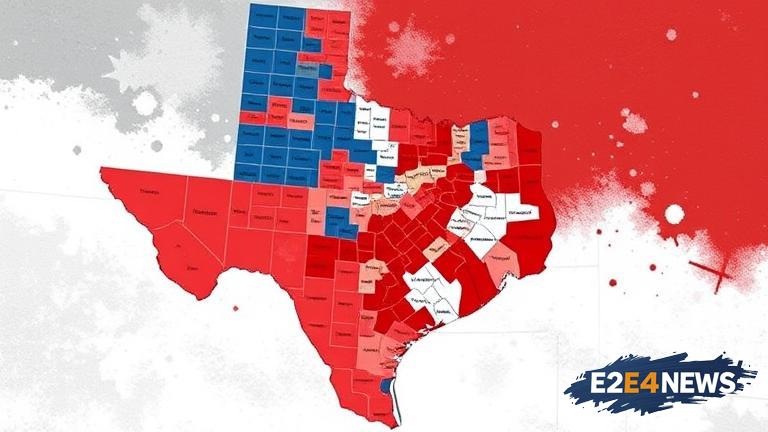Texas Republicans have released a redistricting plan that could significantly boost their influence in the state. The plan, which was unveiled on July 30, 2025, aims to redraw the state’s congressional and legislative districts in a way that would favor Republican candidates. The move is seen as a major effort by the party to consolidate its power in the state and achieve the aims of former President Donald Trump. The plan would create new districts that are more favorable to Republican candidates, potentially leading to a significant increase in the number of GOP lawmakers in the state. The redistricting plan is based on the results of the 2020 census, which showed that Texas had gained two new congressional seats. The plan would also make significant changes to the state’s legislative districts, potentially leading to a shift in the balance of power in the state legislature. The Texas Republicans’ redistricting plan has been met with criticism from Democrats, who argue that it is an attempt to gerrymander the state’s districts and disenfranchise minority voters. The plan has also been criticized by voting rights groups, who argue that it would lead to a reduction in the number of competitive districts in the state. Despite the criticism, the plan is likely to be approved by the Republican-controlled state legislature, potentially paving the way for a significant shift in the state’s political landscape. The redistricting plan is the latest move in a long-running battle over voting rights and electoral district boundaries in Texas. The state has a history of contentious redistricting battles, with Democrats and Republicans frequently clashing over the boundaries of congressional and legislative districts. The current plan is seen as an attempt by Republicans to cement their control over the state’s politics and limit the influence of Democratic voters. The plan would also have significant implications for the state’s minority communities, who could see their voting power diluted as a result of the changes. The redistricting plan has sparked widespread debate and discussion in Texas, with many arguing that it is an attempt to undermine the democratic process and limit the representation of certain groups. The plan has also been criticized by some Republicans, who argue that it goes too far and could lead to unintended consequences. The Texas Republicans’ redistricting plan is likely to face legal challenges, with Democrats and voting rights groups potentially filing lawsuits to block its implementation. The plan has significant implications for the future of Texas politics and could have a major impact on the state’s electoral landscape. The redistricting plan is a major development in the ongoing battle over voting rights and electoral district boundaries in the United States. The plan has sparked widespread interest and debate, with many seeing it as a test case for the use of redistricting as a tool for partisan gain. The Texas Republicans’ redistricting plan is a significant move in the ongoing struggle for control of the state’s politics and could have far-reaching consequences for the state’s voters and lawmakers. The plan has the potential to reshape the state’s electoral landscape and could lead to a significant shift in the balance of power in the state legislature. The redistricting plan is a complex and contentious issue, with many different stakeholders and interest groups involved. The plan has sparked widespread debate and discussion, with many arguing that it is an attempt to undermine the democratic process and limit the representation of certain groups. The Texas Republicans’ redistricting plan is a major development in the ongoing battle over voting rights and electoral district boundaries in the United States, and its implications are likely to be felt for years to come.
